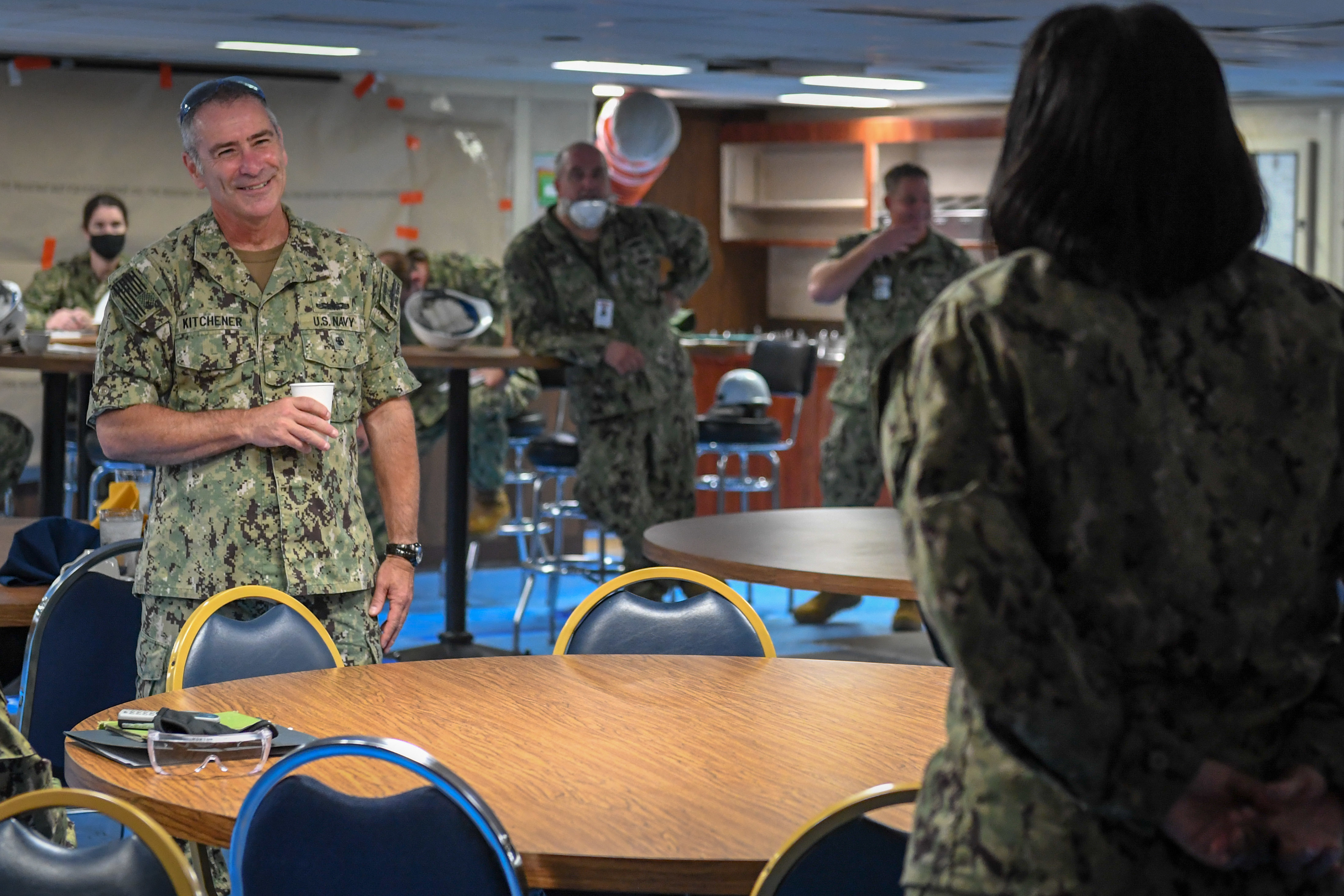
The new head of the Navy’s surface fleet said his predecessor made major improvements in training and readiness, and he wants to use them as a foundation to improve the tactical side: more advanced warfighting training, more self-sufficient ship crews, and more technology being pushed out to ships and unmanned vessels.
Vice Adm. Roy Kitchener took command of Naval Surface Forces and Naval Surface Force Pacific on Aug. 3, relieving former commander Vice Adm. Rich Brown after serving as the head of the Atlantic surface force under Brown for the past year.
“A lot of the work that Adm. Brown and the team did really set us on the right path, and I’m going to continue to build on that foundation. The training investments we made, we’ve just got to continue to make those,” Kitchener told USNI News on Aug. 24, in his first interview since taking over the new job.
“Train, maintain, fight” will be the new bumper sticker slogan for the surface force, he said, following Brown’s “combat-ready ships and battle-minded crews” mantra.
“I think if I can focus on those things, and continue to strengthen that foundation and then add a few things into the mix, I think that’ll make a better surface force out of an already pretty good one, a good, premier force we have out there,” said Kitchener, previewing a speech he’ll be giving on Thursday at the Surface Navy Association’s Waterfront Symposium.
For example, he praised the improvements in seamanship and navigation training, made in the fallout of the pair of fatal collisions in 2017.
“I think we need to apply the same rigor and work towards warfighting, where we develop a continuum where we see ensigns getting what I would consider an apprentice-type skill level of warfighting, and then as they graduate to department heads we really build that base up to the journeyman level, and then when they come back as [commanding officers] to command our ships and as major commanders, as warfare commanders, they become masters. And that’s something I’m going to put a lot into. I think there’s a lot of good work already there that [Naval Surface and Mine Warfighting Development Center] has done and [Surface Warfare Officers School], so I think that’s one of my main investments,” Kitchener said
Self-Sufficiency
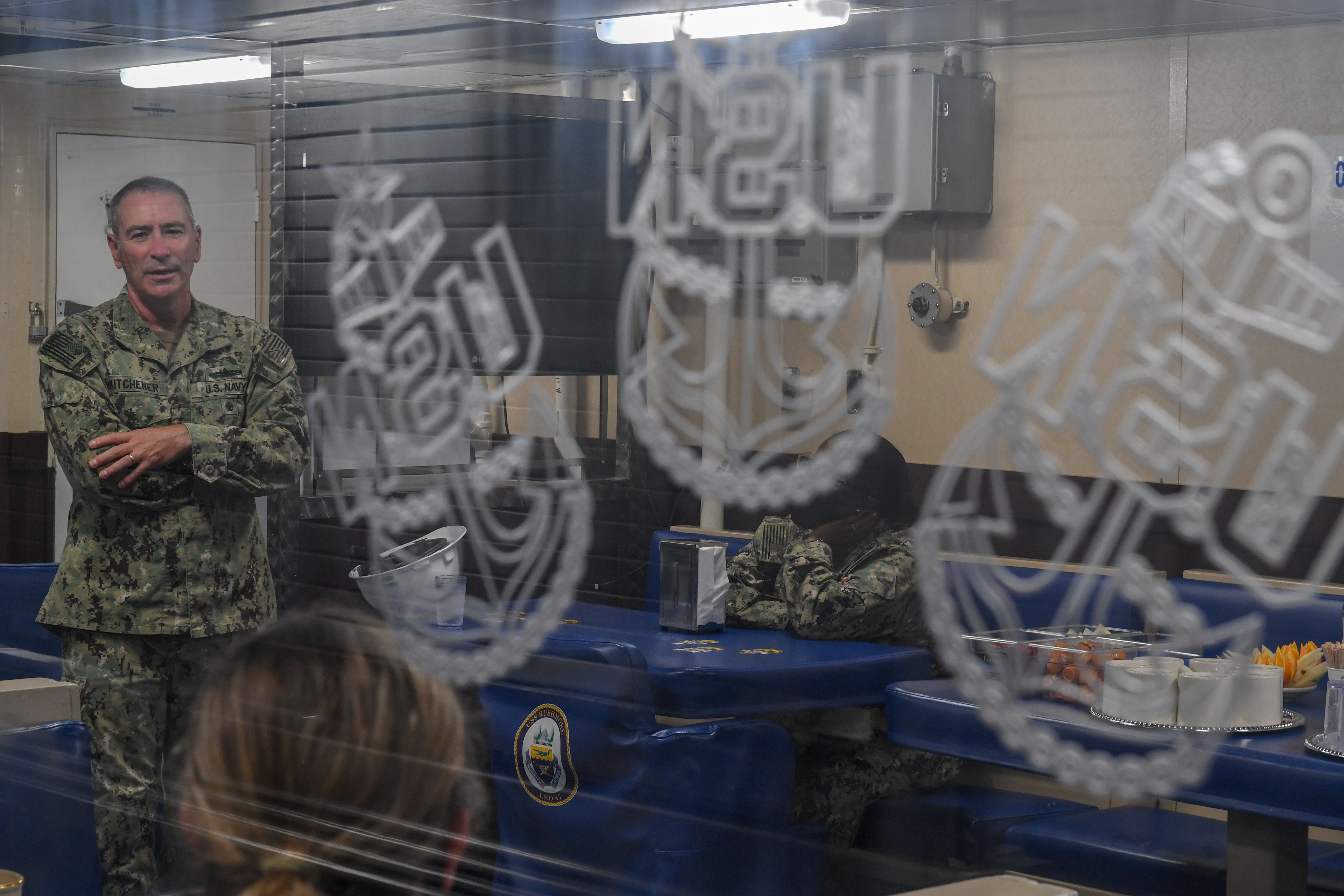
Being able to fight the combat systems with these new advanced skills is important, Kitchener said, but so is being able to sustain the ship itself in tough circumstances. That could be a warzone where movement of resupply ships is limited, or an emerging theater like the Arctic where resupply and movement of people is difficult just due to geography.
“We’ve got to go fight, we need to have our ships ready to do that, we need to be self-sufficient. That’s another big thing that I’m going after,” he said.
As disruptive as the COVID-19 pandemic has been, he said it’s actually forced the Navy to simulate this in a way, testing crews’ abilities to keep themselves operating at sea with the materials – and the people and expertise – they have on hand. The isolation that comes with staying at sea to avoid the virus is “a good snapshot of what we would be required to do if we had to fight forward” and a ship didn’t have access to ashore technical experts in the Navy and in industry.
“What we’ve found in COVID-19 is that we’re a little bit better off than we thought we were, but we could be better,” the admiral said.
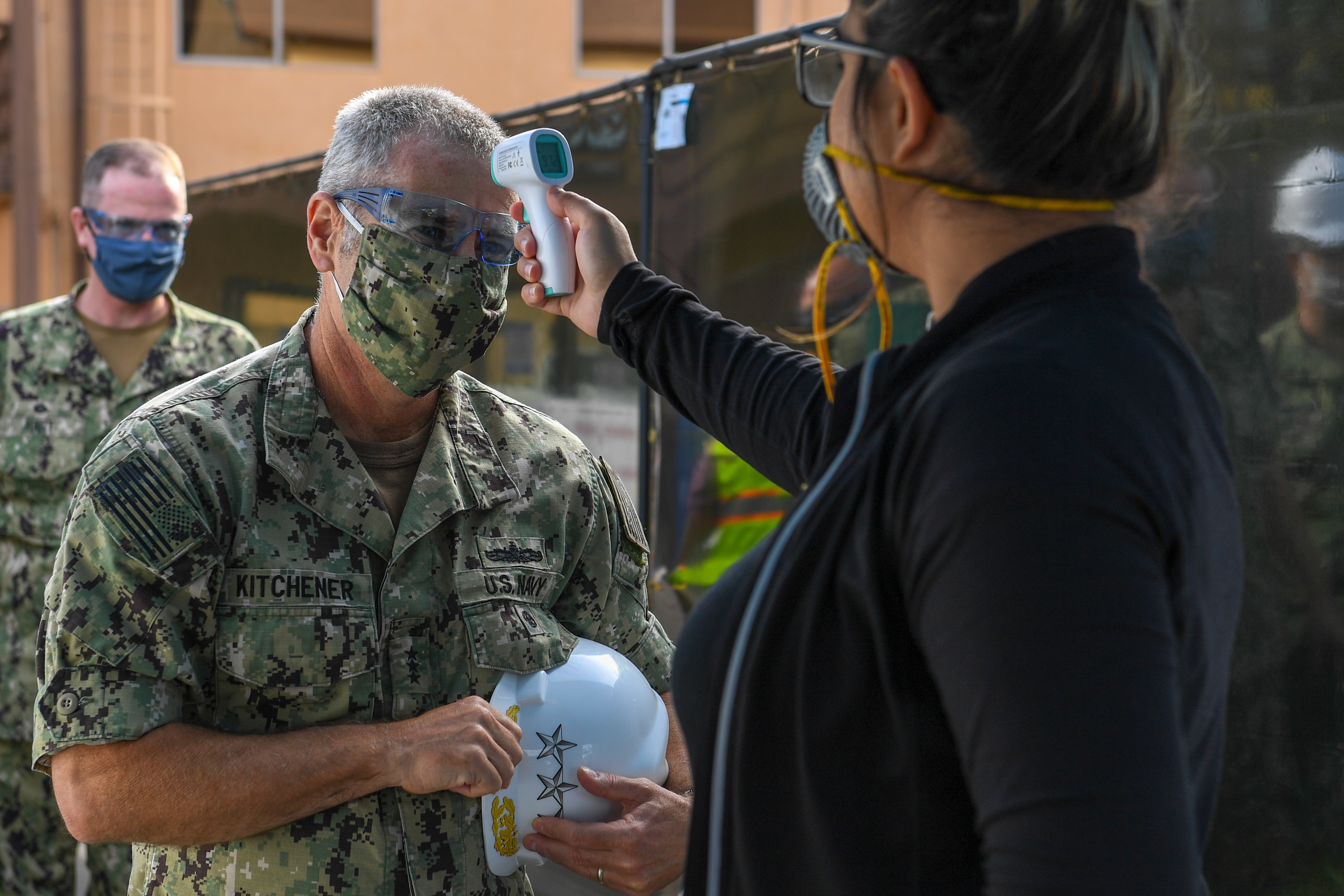
Kitchener described an “ATG Rodeo” pilot program he did on the East Coast and now is replicating on the West Coast, where Afloat Training Group personnel went to sea for extended basic phase training with a group of three ships and sought to check off as many certifications as they could before coming back ashore. This was done to keep the ships safe from the coronavirus pandemic, but the extended at-sea time also forced the self-sufficiency issue, too.
“The idea was to get as many certifications in basic phase tier 1 completed,” Kitchener said, “and that worked really well on the training side: all those three ships went to sea and certified their basic phase. But one of the other things that we did with the program was we monitored very closely, because sometimes what we see is material readiness or the lack thereof impacts their ability to do quality training. And so we were very focused with this group together that, okay, it looks like you’re slowing down, or you were unable to get this done for the last 48 hours; what’s holding you back? And they would talk to us about the casualty, and we’d get the right sailors on that ship, or perhaps maybe somebody from the other ships with them would come over – but they worked together, and it allowed them to start getting at their material readiness early on in the training cycle, building that self-sufficiency with the teams.
“The same thing is happening out on deployment, where we’re not really changing people out. We’ve only really started in the last month or so to rotate personnel out in some of the forward-deployed folks because of the COVID impacts,” he continued.
“And so what that’s done is, it forced our sailors to say, alright, no one’s coming. So it’s on you to fix it. How can we help? How can we enable you? Is it somebody talking to you on the phone with the right documentation? Or in many cases it’s just them getting after it, getting somebody from the engineering department to look at something in the combat systems department – troubleshooting techniques remain about the same for all systems – so regaining that self-sufficiency that way. I think we’re seeing some success, but we need to do better, we need to make sure our sailors are getting the right tools to do better. But the rodeo, I’m really encouraged by, I think we’re onto something in terms of getting more efficient training done, and then there’s all these other intangibles that are coming along with it.”
Risk Assessment and Mitigation
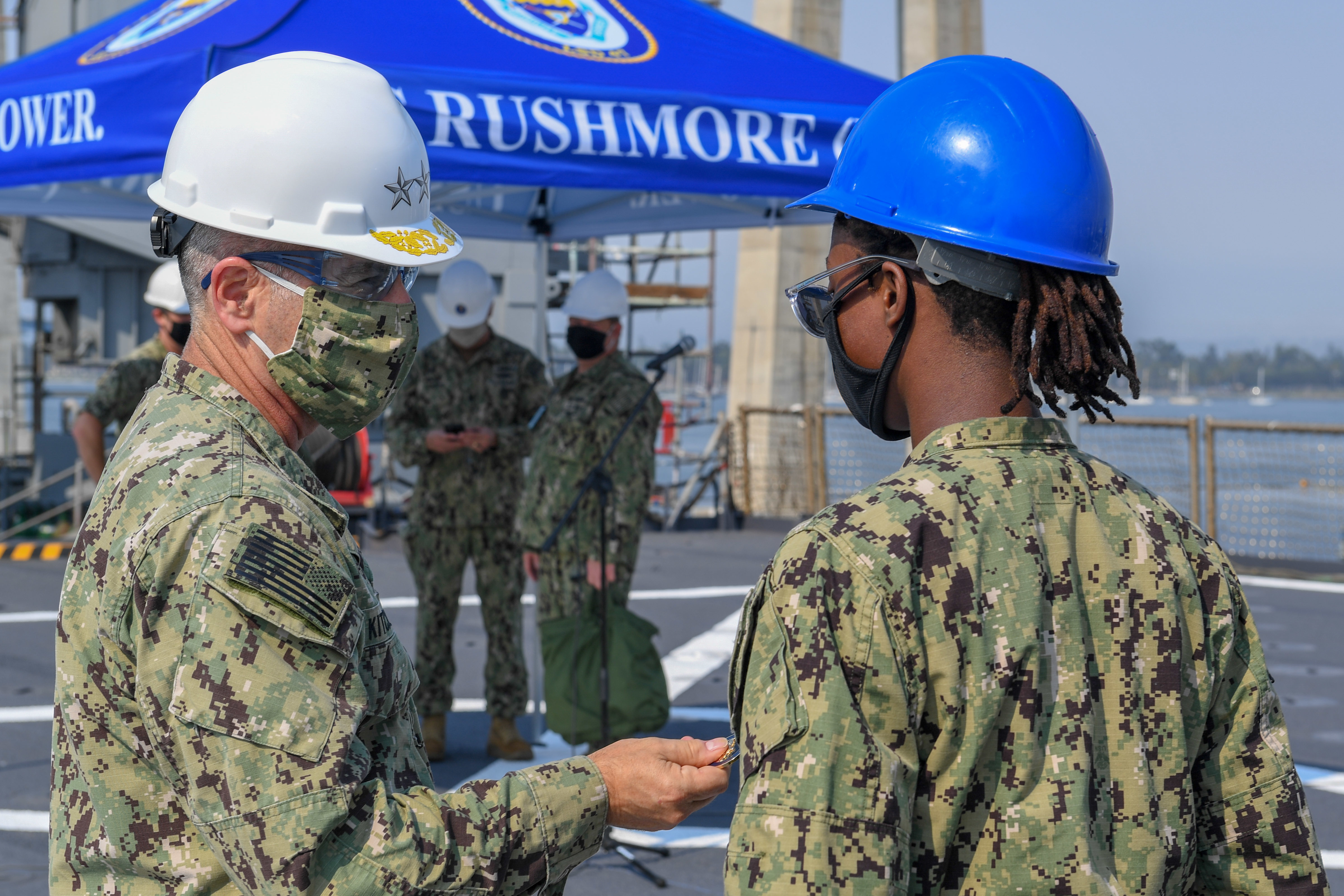
The surface fleet has had some leadership turnover since the fatal 2017 Western Pacific collisions – it was two SWO Bosses ago that they took place, and it was the last SWO Boss that implemented reform measures in the collisions’ aftermath – but Kitchener said he refuses to take his eye off safety. He talked about “organizational drift” and a natural and gradual degradation of standards. The vice admiral offered NASA as an example he talks about with sailors and vowed not to let the Navy repeat: after the 1986 Space Shuttle Challenger disaster, NASA “had that tragic event, they figured out what went wrong, they moved out smartly, fixed it all, and then roughly 10 to 15 years later they did the same thing again with the Columbia. So that’s one of the things I use and I spend a lot of time on, and our force safety officer, I’ve asked him to look at that. As a matter of fact, getting ready to put out another P4 on risk analysis and what I want people to look at, and discussing things like that. What are those things you do on a daily basis that prevent your ship from getting in that kind of situation?”
On the training side, Kitchener said ship handling and safety training for officers through the new SWOS curriculum and for enlisted sailors through the new quartermaster course are helping rehash the 2017 tragedies and reinforce that those mistakes cannot be repeated. Additionally, he’s tasked SMWDC with helping address risk to mission and risk to the force during their advanced warfighting training events with the surface fleet. Kitchener said young officers need to learn what it means if a certain piece of gear is down, or a key crew member is taken out of the fight. Understanding that risk and articulating it up the chain of command, and then making informed decisions about how to proceed, need to be part of the training that ships undergo, the admiral said.
Littoral Combat Ship
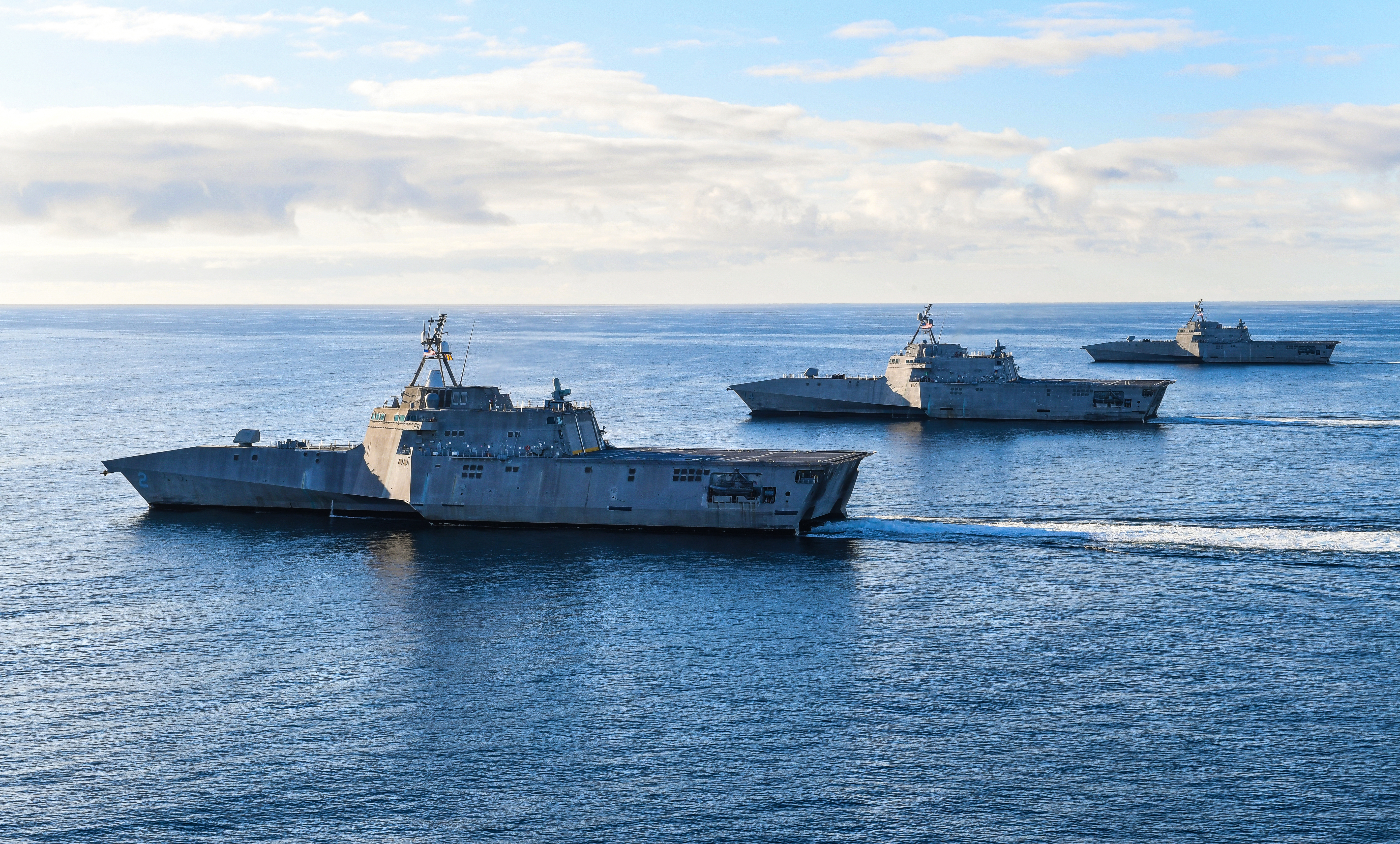
Though many of his top initiatives apply to the whole surface force, Kitchener said there’s much Littoral Combat Ship-specific work to be done.
Brown was able to get the ship class deploying overseas again after a year-and-a-half hiatus from operational activities, and Kitchener said that going the next step and normalizing the ship class is “at the top of my list of things to do.”
In his last job at Naval Surface Force Atlantic, he oversaw the first deployment of the Freedom-class variant to U.S. 4th Fleet and helped lay the groundwork for forward-deploying the hulls to Bahrain.
But he said that, while training is a highlight of the program, there’s still work to be done on the reliability of some components of the ship, as well as finessing what the overseas maintenance model will be.
“Number one, we still continue to have some design problems on some of the engineering components on those ships. I know [Naval Sea Systems Command] has got their strike team and is looking really hard at that,” he said.
“I’ll tell you what, we’re really good at fixing the problems we have with them right now, but … we need to do better than that. They need to not be breaking the way they are. And I think we’ll get to some resolution there. I’ve been encouraged by the work [NAVSEA has] been doing, but we cannot let off on that. So that’s number one, getting that design reliability built back in to some of those systems.”
“I think on the maintenance side there’s some more work to be done. We’ve now successfully had deployments out to 7th Fleet, we’ve had successful deployments to 4th Fleet. And we got some good lessons learned, and we need to kind of figure out, okay, what is our global maintenance [concept of operations]? We need to figure out how are we going to repair these things forward. … And what does that maintenance team look like?” he continued.
A 2016 study overhauling the LCS program “sort of set up what we thought it looked like, but I would argue that, based on what we now know and what we’ve done, it might be a little bit different than that. So there’s some work we need to put into that as well.”
Kitchener made clear that deployments would continue, but he added that a study was in its early stages now on how to continue to mainstream the LCS class, with a particular focus on design reliability and maintenance models.
Future Technology
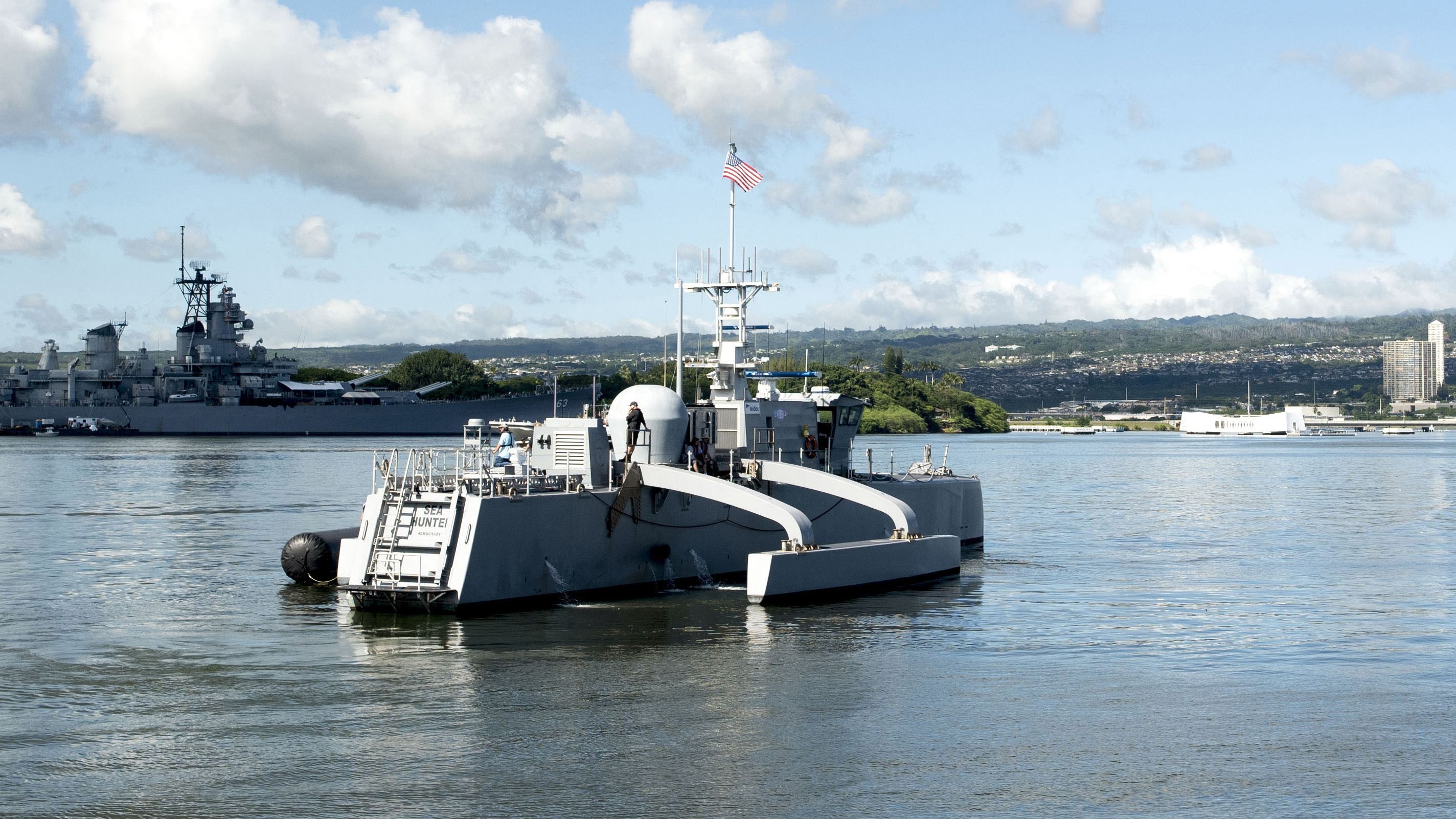
Kitchener also addressed his ideas about the future of the surface navy, even as he has his hands full with ensuring today’s surface force is ready and trained for complex operations.
The admiral said he’s pleased with the work the Surface Development Squadron-1 (SURFDEVRON) is doing to integrate new unmanned systems into the fleet, but he wants more of a tactical focus on ongoing events. Most of the USVs today still fall under control of either the Office of Naval Research or the Pentagon’s Strategic Capabilities Office, but they’re slowing transitioning over to Navy control under the SURFDEVRON. Kitchener advocated hastening the start of testing mission-related capabilities, such as sensor packages, on the USVs even as they’re wrapping up ONR and SCO testing on the autonomy and command and control side.
“There’s a lot of testing of, okay, how do we deal with this unmanned stuff and how do we get the remote control right and the [automatic identification system] and the [International Regulations for Preventing Collisions at Sea]. Well, at the same time we could be testing the ability to put capabilities on those USVs, and so I’ve asked them to look at that,” he said.
With a handful of exercises and events coming up where the USVs will be operating at sea, “how can we make them more tactical rather than just going out and testing some of the functional capabilities that scientists want to look at? What’s the warfighting capability?”
Kitchener said this attitude of getting technology out there and testing it as soon as possible applies to manned ships, too, such as LCS, and comes from his previous assignment to Naval Mine and Anti-Submarine Warfare Command. There he was tasked with getting new mine warfare gear out to U.S. 5th Fleet.
“We were just taking stuff that wasn’t fully developed, we were experimenting, and a lot of gear went out there, and a lot of that gear is now in use today,” Kitchener said.
“And I kind of see the same thing: I want to test capabilities as much as I can, put things on LCS. I know on the East Coast there’s an initiative to put a laser on one of them, and we’ve got to continue to test that kind of stuff because that’s how we’ll get at speed to fleet. Get things out there – what works, we’ll keep; what doesn’t, we’ll send back for more seasoning. So that’s kind of how I look at the SURFDEVRON. I think it’s kind of exciting, I think we just need to start pushing that a little bit harder and get more capability out there.”





